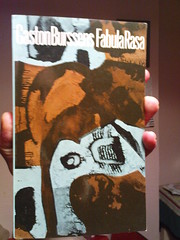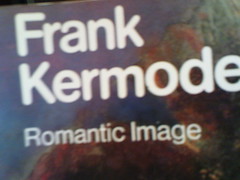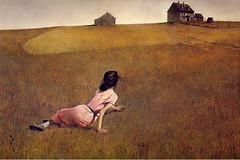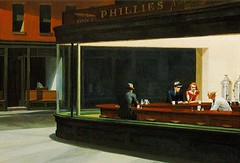Today is Clement Greenberg‘s centennial

Crying Boy (?) – Bruno Amadio
Best-known for his essay Avant-Garde and Kitsch (1939) he is more of an author to acknowledge rather than to admire. His above mentioned Avant-Garde and Kitsch is one of the first texts to one finds when one researches the two extremeties of the artistic experience: avant-garde and kitsch. Two terms coined during the industrial revolution, the first in Paris, the second in Berlin.
Avant-Garde and Kitsch does not deliver. Much more interesting and related reading are The Work of Art in the Age of Mechanical Reproduction (Benjamin, 1936), Notes on Camp (Susan Sontag, 1964) and The Aporias of the Avant-Garde (Hans Magnus Enzensberger, 1962). The intimate connection between avant-garde and popular culture was first celebrated in the 1990 exhibition High and Low: Modern Art and Popular Culture.
I have a separate entry on death of the avant-garde.
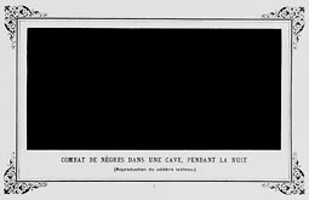
Combat de nègres dans une cave pendant la nuit
Negroes Fighting in a Cellar at Night predates Malevich’s, Black Square on a White Field by 31 years.
As a term avant-garde was replaced by experimental in the 1960s.
Clement Greenberg (1909 – 1994) was an American art critic closely associated with the abstract art movement in the United States. In particular, he promoted the Abstract Expressionist movement and had close ties with the painter Jackson Pollock. He is the author of Avant-Garde and Kitsch. Such was Greenberg’s influence as an art critic that Tom Wolfe in his 1975 book The Painted Word identified Greenberg as one of the “kings of cultureburg”, alongside Harold Rosenberg and Leo Steinberg. Wolfe contended that these critics influence was too great on the world of art.
He introduces his essay by juxtaposing forms of popular culture and high art:
- “ONE AND THE SAME civilization produces simultaneously two such different things s a poem by T. S. Eliot and a Tin Pan Alley song, or a painting by Braque and a Saturday Evening Post cover. All four are on the order of culture, and ostensibly, parts of the same culture and products of the same society. Here, however, their connection seems to end. A poem by Eliot and a poem by Eddie Guest — what perspective of culture is large enough to enable us to situate them in an enlightening relation to each other? Does the fact that a disparity such as this within the frame of a single cultural tradition, which is and has been taken for granted — does this fact indicate that the disparity is a part of the natural order of things? Or is it something entirely new, and particular to our age?”[1]
In the fourth paragraph he starts his defense of the avant-garde vs Alexandrianism (academicism).
- “It is among the hopeful signs in the midst of the decay of our present society that we — some of us — have been unwilling to accept this last phase for our own culture. In seeking to go beyond Alexandrianism, a part of Western bourgeois society has produced something unheard of heretofore: — avant-garde culture. ”
Greenberg is a flawed writer. He uses scare quotes as clarification more than 30 times in this text.
His assessment of kitsch is shortsighted. He explicitly equates academic art with kitsch and vice versa. He is right to connote kitsch with the industrial revolution. Possibly he read The Work of Art in the Age of Mechanical Reproduction written three years earlier, which has the same kitsch/industrial revolution analysis but with much less of the judgementalness.
See also: cultural pessimism and elitism

